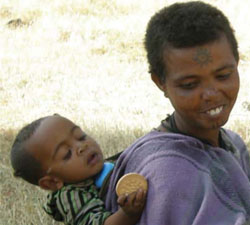9.3.1 Common methods of BCC in immunization
When you want to communicate a message, for example about the advantages of having your child immunized, you should first identify or decide who the message is intended to influence. The message to be sent to a group of school teachers, a women’s group, a youth group, or a group of religious leaders is not the same, even though the aims of all these messages might be to increase immunization coverage. Their level of understanding of the issues involved is likely to be quite different. Therefore in preparing a BCC message, the first step should be to decide who you intend to address. This is your target audience.
Suppose the message you want to communicate is that there are many diseases that are serious and may lead to death, but they can be prevented by immunization; therefore, bringing babies and children for immunization from an early age is beneficial. Who would your target audience be? (Who would you want to communicate this message to?)
You would want to communicate this message to all mothers of babies and children (Figure 9.4), and any other caregivers in the kebele who are responsible for looking after babies and children.

Once you have identified your target audience, the next step is to think about your objective. What change in behaviour do you want your target audience to make? This could be based on the problems you have identified in your communication needs analysis. There are several strategies and activities that you can use, including advocacy, community mobilisation, community conversations and interpersonal communication — all of which are explained in detail in the Health Education, Advocacy and Community Mobilisation Module, Part 2. We will remind you of the main points below.
9.3 Behaviour change communication (BCC)
